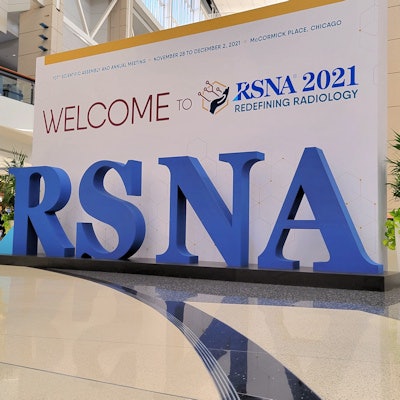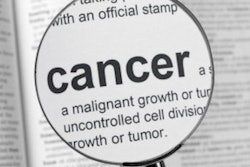
Increasing the number of African American and Black smokers who get screened for lung cancer with low-dose CT would reduce mortality rates from the disease, according to research shared Thursday morning at the RSNA meeting.
The findings highlight the work that needs to be done to improve lung cancer screening adherence in Black individuals, especially since this population tends to have higher rates of both lung cancer and mortality from it, presenter Dr. Ashley Prosper of the University of California, Los Angeles told session attendees.
African American and Black individuals experience the highest rate of death and lowest rate of survival for most cancers, including lung cancer," she said. "And African American/Black men experience higher rates of lung cancer death than any other group."
The National Lung Screening Trial (NLST) was conducted using eligibility guidelines of 55 to 74 years and a smoking pack history of 30 years. The trial showed a 20% annual reduction in lung cancer mortality with annual lung cancer screening using low-dose chest CT compared with chest x-ray, but Black individuals represented only 4.4% of its population, despite the fact that they are disproportionately affected by the disease. (Since the NLST was conducted, the U.S. Preventive Services Task Force and the U.S. Centers for Medicare and Medicaid Services lowered the screening eligibility start age from 55 to 50 and the smoking pack history to 20 years.)
Even though Black individuals have higher rates of lung cancer incidence, they experience greater mortality reduction benefits with CT screening than their white counterparts, Prosper said. So what might have happened if the NLST had enrolled more African American/Black participants?
To address the question, Prosper and colleagues conducted a modeling study that estimated mortality reduction benefits among a patient population with a higher proportion of African American and Black individuals.
The team used a transportability formula with the NLST data, a technique that helps researchers extrapolate treatment effects from clinical trials to target populations in which those treatments or interventions are being considered, according to Prosper. The group "transported" NLST results to the following categories:
- Varying proportions of Black individuals
- Varying proportions of Black and female individuals
- Varying proportions of Black individuals and current smokers
Overall, Prosper and colleagues found that increasing the proportion of Black individuals in a lung cancer screening population showed a greater relative reduction of lung cancer mortality with chest CT than the NLST demonstrated. One example? In a model population with 40% Black individuals, the relative reduction in lung cancer mortality with chest CT screening would increase by 26%, compared with 20% in the NLST.
"Transportability suggests that the mortality reduction achievable with low-dose CT screening may be higher than seen in the NLST as screening is provided to populations with higher proportions of [African American/Black] individuals," Prosper said.
She acknowledged that use of the transportability formula is limited by the original data to which it is applied and cautioned that it's not a "substitute for equitable and inclusive design of randomized clinical trials with diverse participants."
In response to a question from session moderator Dr. Mark Hammer of Brigham and Women's Hospital in Boston regarding how to recruit more African American and Black participants into lung cancer screening programs, Prosper offered some suggestions.
"We need to disclose this data [to patients]," she said. "When I talk to individuals [eligible for screening] they want to know, 'What does this mean for me? How does this affect me as a Black person, a Black man?' "
And radiology needs to be open and welcoming to individuals eligible for lung cancer screening, according to Prosper.
"The screening exam is a gateway for patients who may need ongoing care, such as surgery or chemotherapy," she noted.
Prosper intends to conduct further research using the updated lung cancer screening guidelines, she said.



















